Feeding Guide: Cattle Feed Pellets for Beef Cattle by Growth Stage
Cattle feed pellets are made from a mix of grains, beans, forage, and dried beet pulp. They're rich in vitamins and minerals, and easy to store and feed. The pellets offer balanced nutrition and are suitable for daily feeding at different growth stages.
That said, beef cattle have different needs at each stage. The pellet formula and structure should be adjusted accordingly. Feeding the right pellets helps support healthy growth and better production.
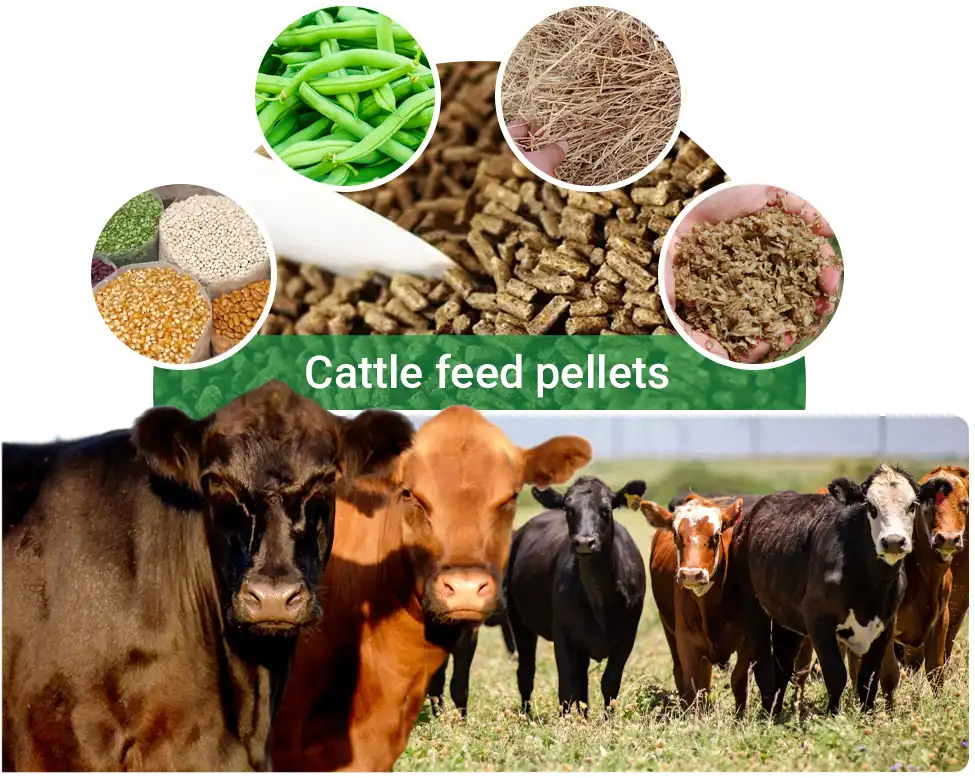
Young Calves (0–6 Months)
During this stage, calves grow fast and need more protein, energy, vitamins, and minerals.
Nutritional Needs
Their diet should include around 18% crude protein (about 20% on a dry matter basis) and roughly 80% total digestible nutrients (TDN) to support tissue development and daily weight gain.
Calcium and phosphorus should stay in a 2:1 ratio to promote bone growth. Vitamins and trace minerals are also important for immunity, metabolism, and healthy development.
Key Features of High-Quality Calf Pellets
Good calf pellets should meet several key standards: proper size, high nutrient density, low dust, good palatability, and added medications to prevent common diseases.
Pellet size: Most pellets are 2.5–3.5 mm in diameter, which suits a calf's mouth. However, studies show that increasing the size to 6 mm doesn't reduce intake and may even improve weight gain. So, a size range of 3–6 mm is widely accepted.
Protein source: Easy-to-digest plant proteins like soybean meal are preferred. Calves usually reject fish meal or blood meal, so high-quality pellets are free from strong-smelling animal proteins.
Pellet stability: Too much powder lowers feed intake. Pellets should be firm and resistant to crumbling.
Palatability: Pellets should be free of moldy or off smells and have minimal dust. Good taste encourages early dry feed intake.
Disease prevention: Quality calf feed often contains anticoccidial drugs like diclazuril or monensin to help prevent coccidiosis and improve safety.
Practical Feeding Tips
- From Day 3: Give a little starter feed and clean water. It helps calves start eating and gets the rumen working.
- 6–8 weeks old: Calves should eat around 1.3 kg of pellets a day. This gets them ready for weaning.
- 1–2 weeks before weaning: Cut back on milk slowly. Fewer feedings help calves shift to dry feed.
- 1–2 weeks after weaning: Keep feeding pellets. Add a bit of good hay to help the rumen grow and work better.
- Up to 3 months: Change feeds step by step-7:3, then 5:5, then 3:7 (old to new). This makes the switch easier.
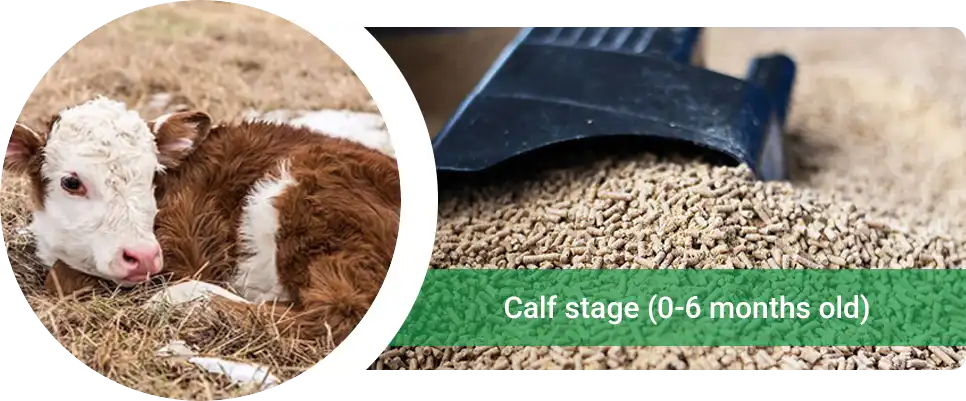
Growing Cattle (6 Months to Finishing or Before First Breeding)
This stage refers to young cattle after weaning. The goal is to support balanced growth of bones and muscles, not rapid fat gain.
Nutritional Needs
Grower cattle need 12–16% crude protein in their daily feed. To support weight gain and basic metabolism, they also need moderate energy levels-typically 65–70% total digestible nutrients (TDN) in the diet.
Bone development requires enough calcium and phosphorus. For immunity and metabolism, trace minerals like copper, zinc, and selenium are important, along with vitamins A, D, and E.
Key Features of Grower Cattle Pellets
Pellet size: Typically 6–8 mm, which suits the chewing ability of grower cattle and supports better intake and rumination.
Balanced nutrition: Most formulas include 60–70% energy sources (like corn or wheat), 20–25% protein meals (such as soybean or cottonseed), and 5–10% minerals and additives.
Adequate fiber: Crude fiber should make up at least 15% of dry matter to help prevent low rumination and acidosis.
Palatability: Young cattle are less sensitive to taste than calves, but feed should still be low in dust and free of off smells to avoid reduced intake.
Practical Feeding Tips
- Feeding method: Offer roughage freely and give limited concentrate to meet energy needs and keep the rumen active.
- Concentrate control: Keep daily concentrate at 0.5–1% of body weight. If forage quality is poor, slightly increase the amount. Avoid feeding all at once.
- Growth tracking: Weigh cattle regularly and adjust feed as needed. A daily weight gain of 0.8–1.0 kg is ideal.
- Water and environment: Provide enough space for movement and clean water at all times. Make sure water troughs stay clean to support intake and metabolism.
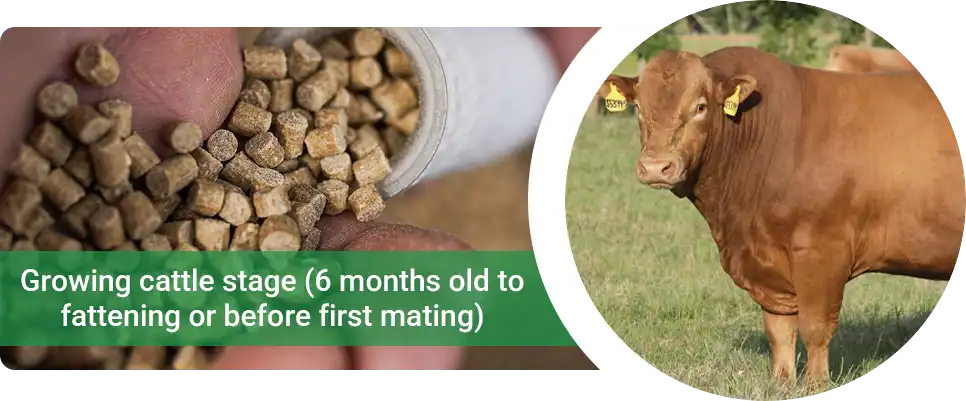
Finishing Cattle (Late-Fattening Cattle)
This stage refers to cattle in rapid weight gain and fat deposition, raised for finishing. Their energy needs rise sharply, while protein needs gradually decrease.
Nutritional Needs
To support fast weight gain, the diet should provide 70–75% total digestible nutrients (TDN). As body weight and fat increase, protein demand goes down. A crude protein level of 12–14% is usually enough.
At the same time, heavier body weight puts more stress on the bones, raising calcium needs. A lack of calcium can lead to acidosis and bone problems. Vitamins A and E are also important for immune support and better meat quality.
Key Features of High-Quality Finishing Cattle Pellets
Pellets for finishing cattle are usually used as high-concentrate feed. They are known for their high energy density, larger size, and added fiber to support rumen health.
High energy density: The formula should include over 60% high-energy grains such as corn, barley, or wheat to meet the cattle's needs for rapid weight gain and fat deposition.
Moderate protein level: Crude protein should be kept between 15–20% to support lean growth without excess.
Balanced fiber: Pellets should contain fermentable fiber sources like distillers grains, wheat bran, beet pulp, or soybean hulls. These help keep the rumen healthy and reduce the risk of acidosis.
Proper size and hardness: Pellets should be 6–8 mm in diameter and 1–2 cm long. They should be dense, not easily broken, and easy for adult cattle to chew.
Complete nutrition: The feed should include key minerals (like calcium), buffers (like baking soda), rumen modifiers (such as monensin), and vitamins A and E to boost feed efficiency and meat quality.
Some high-energy pellets may include added fat (like vegetable oil), but the amount should be kept below 5%.
Practical Feeding Tips
- Feed structure and transition: Start with a mix of 50% roughage and 50% concentrate. Over 2–3 weeks, gradually increase the concentrate and reduce the roughage. Each increase in concentrate should be no more than 0.5 kg. Protein levels can slowly drop from 14–16% to around 12%.
- Feeding frequency and fiber management: Feed at least three times a day. Make sure the diet includes 10–15% crude fiber. You can add a small amount of hay or grass meal to help support rumination and prevent acidosis.
- Health and nutrition support: Provide clean drinking water at all times. Add buffers like 1% baking soda and calcium sources such as 1–1.2% limestone to the diet. Keep an eye on manure consistency and rumination to check how well the feed is working.
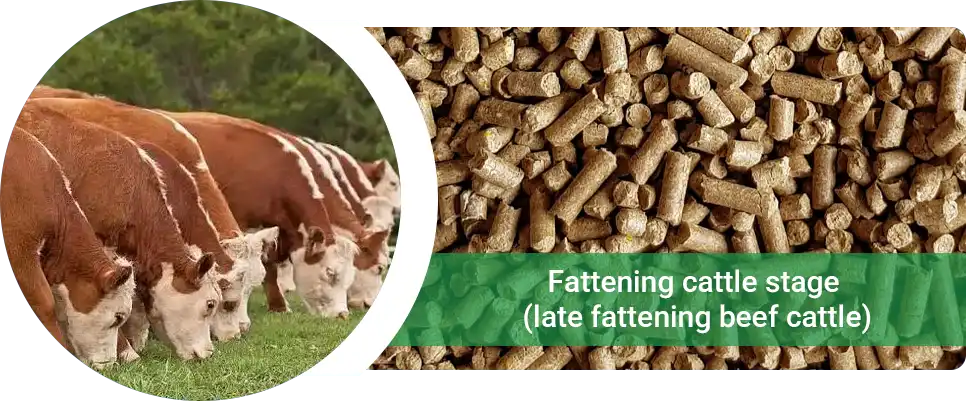
Feeding the right pellet formula at each stage of growth is key to raising healthy, efficient cattle.
If you want more control over feed quality and cost, you can also make your own cattle feed pellets . This lets you manage both ingredients and nutrition more precisely.
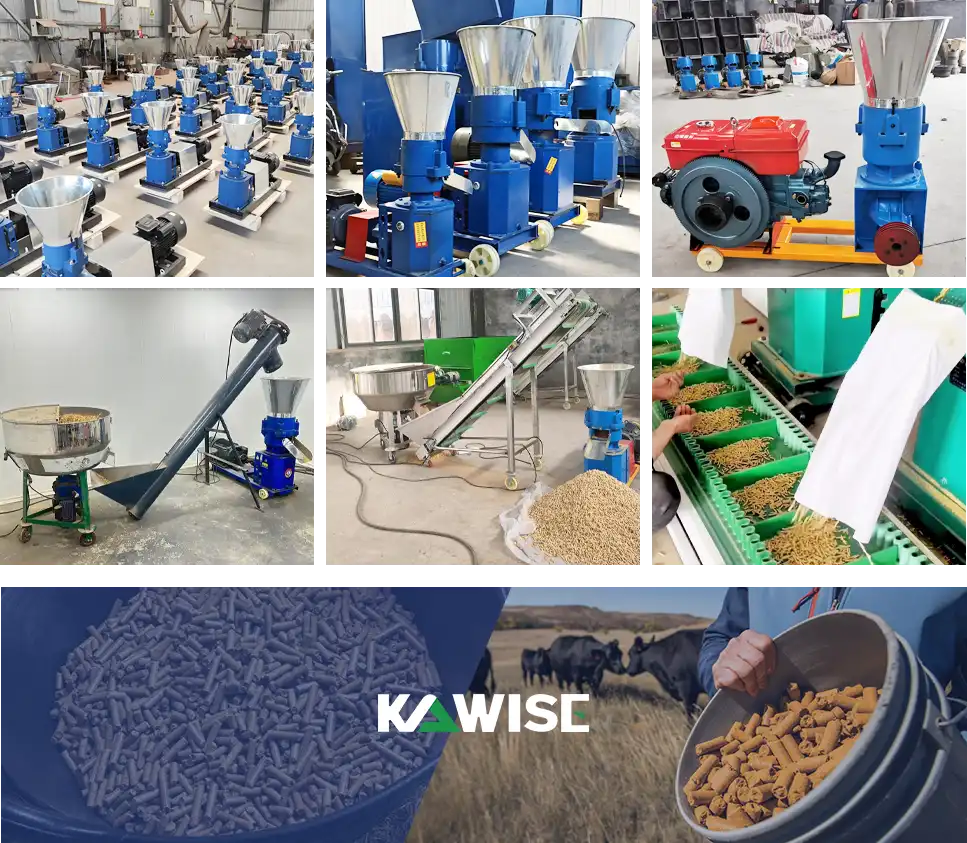
 Online Contact
Online Contact Send Message
Send Message
Need Some Help?
Contact us quickly and we will reply you within 24 hours. We will not disclose your information.